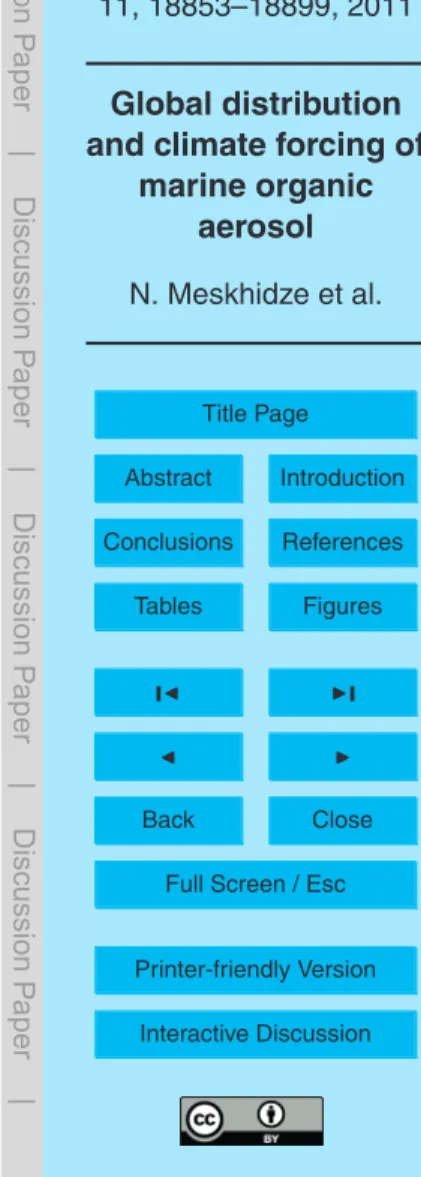Global distribution and climate forcing of marine organic aerosol – Part 1: Model improvements and evaluation
Texto
Imagem




Documentos relacionados
In addition to the comparison with hourly concentrations of AMS-derived marine or- ganic aerosol at an inland site, we have also evaluated terrestrial and total organic
The spatial distribution of aerosol chemical com- position and the evolution of the Organic Aerosol (OA) fraction is investigated based upon airborne measurements of aerosol
by the AMS, and the estimated number losses, OA density, and collection e ffi ciency. ambient sample), [OA] is the mass concentration of organic aerosol, [Sulfates] is the
In order to determine the Fe dissolution kinetics in the dust aerosol water, which contains organic ligands, such as oxalate, and high concentration of inorganic ions, such as
Overall, the models calculate very similar total OA load seasonality, which peaks during the Northern Hemisphere summer season, when both primary (biomass burning) and
(2011) found that organic aerosol particles measured at the PUY site during summer 2010 were likely linked to biogenic sources: the mass spectra of OOA (oxygenated organic aerosols)
Annual mean emissions (2006–2010) of (a) sea salt aerosol and (b) primary marine organic matter (PMOM) in sea spray aerosol, (c) the mass fraction (in the dry diameter range of
Based on previously studied emission profiles of organic compounds (Schauer et al., 1996; Simoneit et al., 2004b) and the above discussion, organic compound classes quantified in




